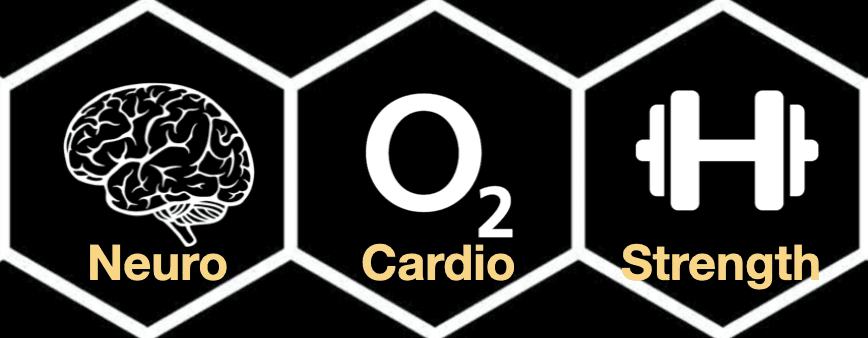

Let’s face it, the world of fitness and exercise can be incredibly confusing! What’s the best way to exercise and spend your valuable time? Should you walk, jog, bike, do yoga, barre, pilates, TRX or weight train? How about CrossFit, olympic lifting, HIIT workouts, circuit training, and on and on?
First of all, I will be assuming that the reason you want to train is to be healthy (i.e. physically strong, flexible, powerful, have good endurance, coordination and balance, hormonal regulation, strong neurological function, and cardio-respiratory function). Overall, to live a functionally optimal life… and look and feel great as a result!
If your goal is otherwise (i.e. solely for looks or for competition) this piece is non-applicable for you.
After decades of sifting through endless information and expert sources, I’ve decided what the best 3 principles are for attaining the best levels of fitness for a lifetime and thus, have designed my training sessions to reflect these requirements.
I do want to mention, it’s not my place to tell you WHAT to do (although I do have my preferences), I will be instructing you as to HOW to design your training plan so you can plug and play what YOU like to do and change it up according to how your tastes and interest change throughout your life.
The 3 Principles are STRENGTH, NEURO, and AEROBIC. These principles don’t necessarily have to be included in the same training session (although that would be easiest), it’s more important you find ways to include them daily (whatever that looks like for you).
Principle #1 STRENGTH
The concept of STRENGTH refers to muscular power, balance, flexibility, coordination, and stability. While there are too many exercises to count that fall into this category, my recommendation is to bring at least 2-3 of each category: Push, Pull, and Hinge into each training session.
Examples of STRENGTH include:
Examples of Push
Examples of Pull
Examples of Hinge
Principle #2 NEURO
NEURO refers to movements, stretches, or exercises that support spine and nerve system integration, strength, and stability.
Examples include:
Principle #3 AEROBIC
AEROBIC refers to exercises that utilize a high amount of oxygen and are endurance-type exercises.
Note that Aerobic exercise is critically important because NOTHING stimulates the birth of new nerve cells and neuro (synaptic) connections like aerobic exercise. Aerobic activity also is pivotal in taking you out of stress physiology as it significantly increases vagal nerve activity (which is like a break pedal to your overworked/overstressed body and mind)!!!
Examples include:
AEROBIC
At the end of the day, it’s all about making sure your new training plan is fun and fruitful so it becomes a regular event during you day and week that you look forward to and not try to sidestep.
As always, I look forward to you comments and questions during your new journey!
Talk soon,
Dr. Rob